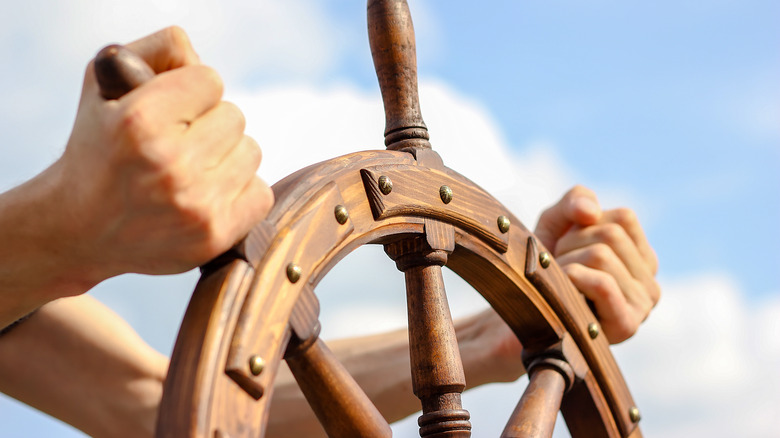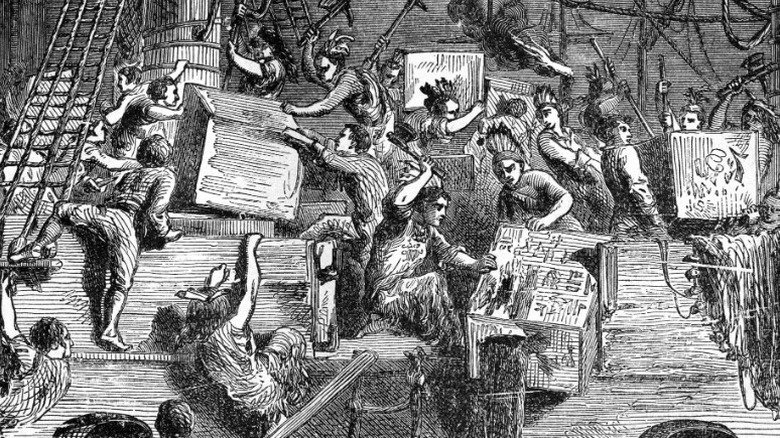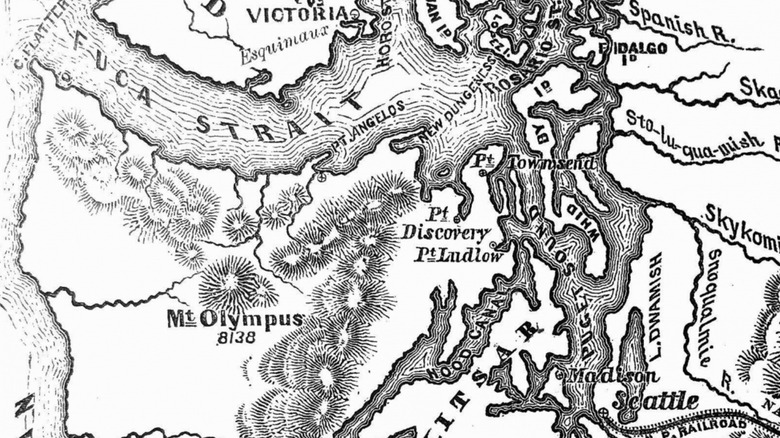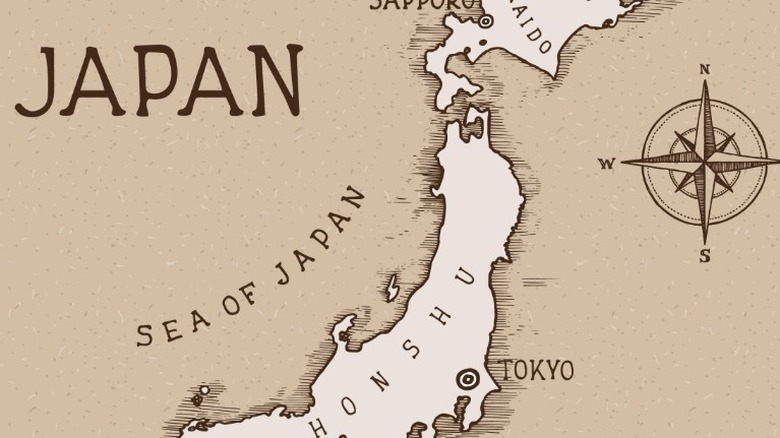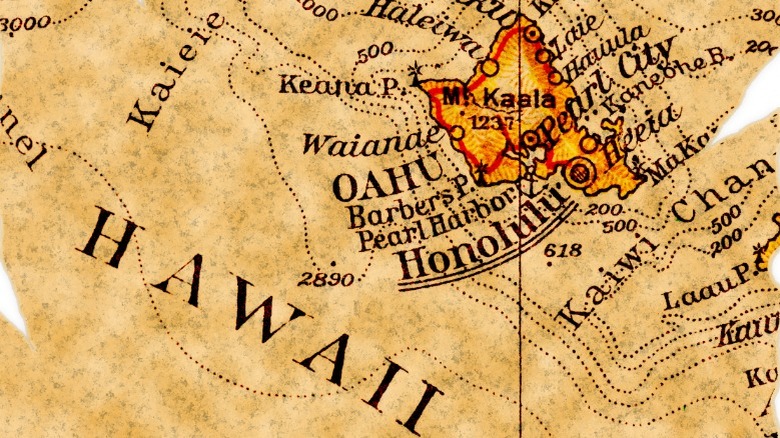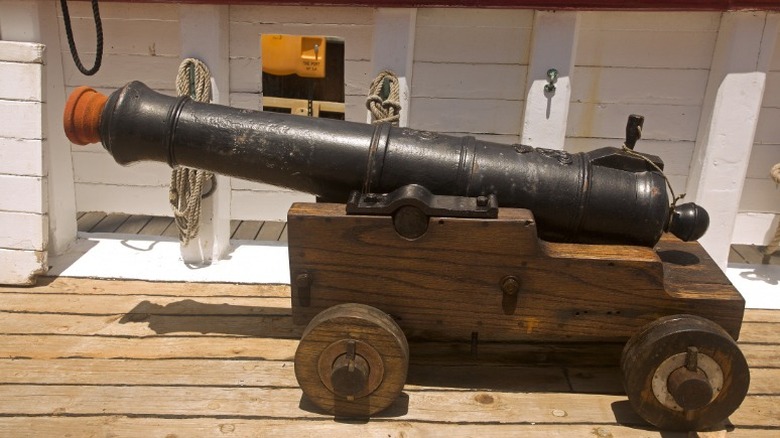Who Was John Kendrick, The Explorer Who Predated Lewis And Clark?
The age of exploration involved countless brave souls who traversed the high seas, seeking far-off lands for wealth. For years, it was a race between the British, Spanish, French, and Portuguese, all of whom were vying for the right to put their nation's flag onto soils that would yield valuable minerals and spices — at the cost of the indigenous peoples they would have to eliminate. The names James Cook, Ferdinand Magellan, Christopher Columbus, Hernando de Soto, Hernán Cortés, and dozens of others are still etched in history books, as are their successes and brutalities. As this age came to an end, most of the globe was under claim by one Western power or another, but there remained a lot of unchartered territories deep within the realms of these conquests. And when the British colonies in North America finally achieved their independence from the Crown, the newly formed United States began to make its way with exploration and conquest.
Much of this centered around westward expansion, as this new government did not own or control most of the continent. Wrangling it away from Mexico, Spain, and France took time. Within a century, a combination of war and diplomacy gave the new country control of what is now known as the continental U.S. History tells of how explorers Lewis and Clark were among the first to explore the vastness of the continent for the U.S. But one sea captain deserves a bit of credit, too — his name was John Kendrick, the man credited for launching the first expedition of the Pacific Northwest for the U.S. (per the University of Washington).
Kendrick made his mark as a member of the Sons of Liberty
Captain John Kendrick was from a sea-faring family. He was born in 1740, the son of a whaling vessel master (via Historic Mysteries). He began his adult life aboard a whaling ship himself, sailing out of St. Lawrence and later Orleans, Massachusetts. During this time of his life, he developed strong relationships with several of the Indigenous tribes in the area. The loyalties here would lead him to fight on their side during the Seven Years' War in a militia.
After the contingent of Colonists and the British defeated French forces in the war, hostilities began to grow between the Crown and the colonies. The book "Morning Fire: John Kendrick's Daring American Odyssey in the Pacific" reveals that Kendrick, too, was still not a fan of England. According to "Morning Fire" author Scott Ridley, Kendrick was in staunch opposition to both the Townsend Acts and the Stamp Act and was becoming a fixture at Boston tea houses and taverns where he shared his animosity with other dissenters. Historic Mysteries reports that Kendrick took part in the infamous Boston Tea Party when the Sons of Liberty boarded vessels and dumped British tea into the bay.
Kendrick put his vocation to great use for the rebellious colonists after independence was declared. He was commissioned as a commander of a ship by the Continental Navy in 1777 and led his crew on successful missions to disrupt British supply lines. These victories at sea led to Kendrick being welcomed home as a hero of the war in 1778.
He led the first U.S. exploration of the Pacific Northwest
The years following the end of the American Revolution found John Kendrick back to working in the whaling industry (per Historic Mysteries). But the news of English sea captain James Cook's journeys across the Pacific grabbed the attention of other countries, each of whom could see great financial opportunities. Merchants in New England financed an expedition of two ships to make their way to the Pacific Northwest with Kendrick at the helm. Kendrick was aboard the larger of the two vessels, the Columbia Rediviva, while Captain Robert Gray was in charge of the sloop Lady Washington. When the ships arrived off the coast of Novia Scotia, they became involved in the middle of a heated territorial skirmish between the British and the Spanish, both of whom were vying for control of the territory (via Britannica). Of course, complicating matters further was the fact that this area was already settled and in the possession of Indigenous people.
Kendrick was first approached by the Spanish navy by Commander Esteban José Martinez when the Spanish ship Princesa arrived. Kendrick and his crew had already spent the winter building relationships with the locals and further impressed Martinez with his dislike of the British. Martinez gave orders to leave Kendrick's two ships alone and went about his business capturing British vessels. This lessened the competition for Kendrick and the merchants he was representing.
The two nations nearly came to an all-out war over what would later be known as the Nootka Crisis. Spain and England eventually agreed that the land belonged to the Crown.
An expedition to Japan didn't yield the results he was hoping for
John Kendrick left the Pacific Northwest for numerous other adventures at sea. His exploits led the ships under his command to far-off lands, in hopes of making large profits for the merchants who backed him. He journeyed to China and opened trade for sandalwood and pearls, and even made his way back to further explore the northwest coast of North America (per Historic Mysteries). But being the first American to lead an expedition to this area wasn't enough for the sea captain. After departing China in 1791, Kendrick set his sights on trading with the isolationist nation of Japan.
The Consulate General of Japan in New York tells of how Kendrick became the first known American to set foot in this Asian country. Japan at that time was not one to allow foreign ships into their waters, let alone land their crews. Kendrick had a hull full of otter pelts he was determined to sell and came up with a ruse that let him come ashore. Claiming that a storm forced them to seek shelter, Kendrick landed at Kushimoto Oshima Island in Wakayama Prefecture. Kendrick's footfalls on Japanese soil might have been successful, but he was unable to negotiate any trades for his wears. Still, Kendrick's visit was the first recorded in official Japanese documents.
Kendrick's ship was one of the early ones to reach Hawaii
The successes of legendary British seafarer Captain James Cook led to merchants from Western powers financing voyages to Hawaii. It was a strategic spot, giving respite to a ship's crew in the middle of a long voyage across the Pacific Ocean. The fact that Cook was killed by locals on his third mission to the islands did little to keep Hawaii off the radar of profiteers (per History). By the time John Kendrick made his way to the island nation, there were more than a dozen other captains who had made their way there. The U.S. Naval Institute reports that he stopped there for the first time after he left his initial expedition to the Pacific Northwest. Kendrick stayed there for a time and gathered needed supplies, as well as hunted for items that he could trade on his journey.
During his final visit to Hawaii in 1794, Kendrick landed at Fairhaven (modern-day Honolulu). He was present during the middle of a war between two Hawaiian factions, one led by a chief from the island of Atooi (now Kauai) and the other by the King of Whoahoo (now Oahu). Kendrick landed on the side of Whoahoo and had his crew lend support. Historic Mysteries tells of how Kendrick was able to help Whoahoo emerge victorious with a bit of help from the British vessel, the Jackal. Kendrick wanted to commemorate this victory — a decision that would soon cost him his life.
He is said to have been killed by a cannon
The day after the victory, John Kendrick ordered a 13-gun salute in celebration (per Historic Mysteries). The captain was settled in the rear of his ship, Lady Washington, eating his breakfast when the boom of the first cannon was heard. It had been arranged that the Jackal would fire their cannons in response. But when the cannons aboard the British vessel began their fire, it was discovered that no one checked the contents of the barrels before they were ignited. Grapeshot — a lethal ammunition — had been left in one of them, overlooked by the Jackal's crew. Rather than a loud (but harmless) boom, the cannon sent a volley of grapeshot across the way and into the cabin where Kendrick and several officers were gathered. The grapeshot killed Kendrick and company, bringing a sudden end to the sea captain's daring and adventurous career.
The U.S. Naval Institute sums up Kendrick's many accomplishments by pointing out that he was the first sea captain to "give and receive a Federal salute to the U. S. flag in Hawaiian waters," as well as the first American captain to round the Cape Horn of South America.
